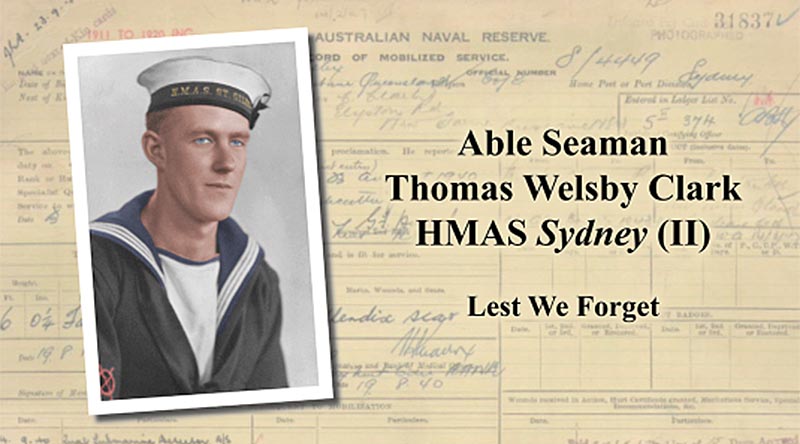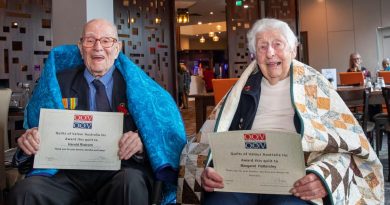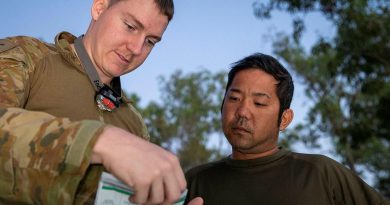Rededication ceremony for HMAS Sydney II ‘unknown sailor’
Share the post "Rededication ceremony for HMAS Sydney II ‘unknown sailor’"

More than eighty years after HMAS Sydney II was sunk, the Royal Australian Navy has re-dedicated the remains of Able Seaman Thomas Welsby Clark in the War Graves at Geraldton Cemetery, Western Australia.
FILE IMAGE: A colourised studio portrait of S/4449 Ordinary Seaman Thomas Welsby Clark. On 19 August 1941 he became a crew member of HMAS Sydney and was one of the 645 crew who lost their lives following an action with the disguised German merchant raider Kormoran off the coast of Western Australia on 20 November 1941.
Previously referred to as the HMAS Sydney II unknown sailor, Able Seaman Clark was formally identified after extensive DNA research in 2021.
Minister for Veterans’ Affairs and Defence Personnel Matt Keogh said the re-dedication ceremony honoured the bravery of Able Seaman Clark and his 644 shipmates.
“Able Seaman Clark and his fellow crew members made the ultimate sacrifice in service to Australia. Today, we remember them and pay tribute to the families that were left behind when HMAS Sydney II was tragically sunk,” Minister Keogh said.
Sydney II was lost following an intense battle with the disguised German merchant raider HSK Kormoran, 200 kilometres west of Steep Point, WA.
Able Seaman Clark’s remains were found in a raft off Christmas Island nearly three months after Sydney II sank.
He was just 21 when he died, tragically one of the many young lives lost in the battle.
“In youth, and strength, and loyalty, Thomas Clark gave everything we can ever hope to give – his sacrifice for our safety,” Minister Keogh said.
Chief of Navy Vice Admiral Michael Noonan said establishing Able Seaman Clark’s identity involved specialists in DNA analysis, forensic pathology and dentistry, ballistics, anthropology, archaeology and naval history.
“This was a massive undertaking, spearheaded by the Sea Power Centre. I commend everyone involved,” Vice Admiral Noonan said.
Associate Professor Jodie Ward leads the AFP National DNA Program for Unidentified and Missing Persons that contributed DNA evidence to assist in identifying Able Seaman Clark.
“The AFP is honoured to have assisted with the DNA identification of one of Australia’s fallen heroes,” Associate Professor Ward said.
“This would have been impossible without the dedicated work of the Royal Australian Navy and team of forensic specialists over an 80-year long investigation.
“This is an example of how advancements in forensic science can provide fresh hope for previously unsolvable cases, help answer long-standing questions, and reunite families with those they have lost.”
The nephew of Able Seaman Clark, Colin Clark, travelled from Queensland to represent his family at the dedication ceremony.
At the service, the Last Post was played and wreaths laid by Vice Admiral Noonan, Mr Clark and a number of dignitaries.
.
.

.
.
Share the post "Rededication ceremony for HMAS Sydney II ‘unknown sailor’"





